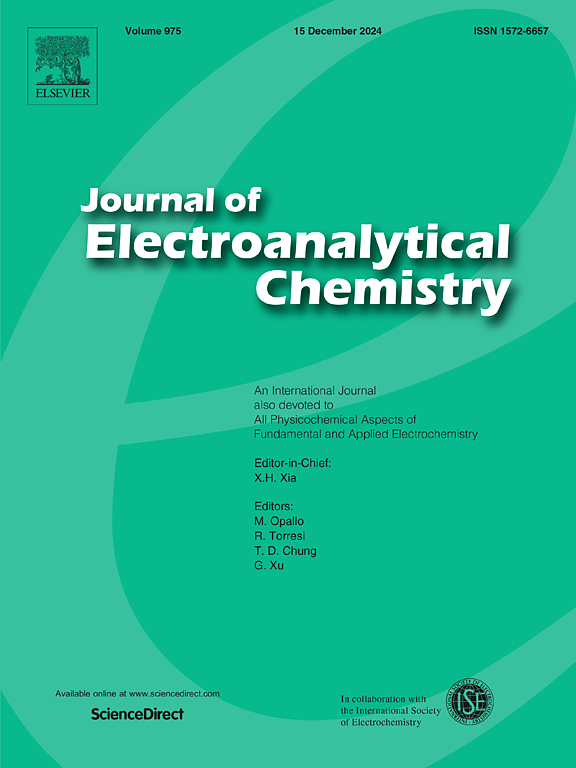Discharge properties of Mg-Zn-Ca-In alloys as anodes for primary Mg-air batteries
IF 4.1
3区 化学
Q1 CHEMISTRY, ANALYTICAL
引用次数: 0
Abstract
The synergistic enhancement of voltage and efficiency remains a critical challenge in the development of high-energy-density magnesium–air batteries. In this study, a novel Mg-1Zn-1Ca-1.5In anode was developed, demonstrating superior performance with anodic efficiency of 65.74 %, discharge voltage of 1.38 V, and specific energy density of 1953.01 ± 132.9 mWh g−1 at 10 mA cm−2. To understand the underlying mechanisms, synergistic strategies contributing to the concurrent enhancement of both voltage and efficiency were systematically investigated. The presence of the (Mg, In)2Ca phase promotes the primary dissolution and subsequent formation of the discharge products, effectively facilitating the transfer of hydrogen evolution sites from the secondary phase to the α-Mg matrix. Meanwhile, the incorporation of In into the α-Mg matrix significantly suppresses the hydrogen evolution reaction, thereby enhancing anodic efficiency. Additionally, the negative shift of the self-corrosion potential and the formation of a thinner discharge product layer further improve the discharge voltage. This study provides valuable insights into the rational design of magnesium alloy anodes with simultaneously high efficiency and voltage, offering a promising pathway toward the development of next-generation Mg–air batteries.
Mg-Zn-Ca-In合金作一次镁空气电池阳极的放电性能
在高能量密度镁空气电池的发展中,电压和效率的协同提高仍然是一个关键的挑战。本研究制备了一种新型Mg-1Zn-1Ca-1.5In阳极,阳极效率为65.74%,放电电压为1.38 V,在10 mA cm - 2下比能密度为1953.01±132.9 mWh g-1。为了了解潜在的机制,系统地研究了有助于同时提高电压和效率的协同策略。(Mg, In)2Ca相的存在促进了初溶和放电产物的形成,有效地促进了析氢位点从二次相向α-Mg基体的转移。同时,在α-Mg基体中掺入In可显著抑制析氢反应,从而提高阳极效率。此外,自腐蚀电位的负移和更薄的放电产物层的形成进一步提高了放电电压。该研究为高效、高电压镁合金阳极的合理设计提供了有价值的见解,为下一代镁空气电池的发展提供了一条有希望的途径。
本文章由计算机程序翻译,如有差异,请以英文原文为准。
求助全文
约1分钟内获得全文
求助全文
来源期刊
CiteScore
7.80
自引率
6.70%
发文量
912
审稿时长
2.4 months
期刊介绍:
The Journal of Electroanalytical Chemistry is the foremost international journal devoted to the interdisciplinary subject of electrochemistry in all its aspects, theoretical as well as applied.
Electrochemistry is a wide ranging area that is in a state of continuous evolution. Rather than compiling a long list of topics covered by the Journal, the editors would like to draw particular attention to the key issues of novelty, topicality and quality. Papers should present new and interesting electrochemical science in a way that is accessible to the reader. The presentation and discussion should be at a level that is consistent with the international status of the Journal. Reports describing the application of well-established techniques to problems that are essentially technical will not be accepted. Similarly, papers that report observations but fail to provide adequate interpretation will be rejected by the Editors. Papers dealing with technical electrochemistry should be submitted to other specialist journals unless the authors can show that their work provides substantially new insights into electrochemical processes.

 求助内容:
求助内容: 应助结果提醒方式:
应助结果提醒方式:


